Hina dolls are the symbol of the Hinamatsuri festival, also known as the “girls’ festival”, which takes place on March 3 every year in Japan.
Set in the ancient Japanese imperial palace, each Hina doll plays a different role, and their names and costumes are also different.
In this article, I will introduce the roles of each doll and the structure of a complete Hina doll set.
This information will help you enjoy Hina dolls much more interestingly, so definitely read it!
How are Hina dolls made?
Traditional Hina dolls are made from many materials.
The body is made of wood or straw, the hands are made of wood or plastic, and the head is made of plaster.
There are two main methods for making Hina dolls: Ishōgi and Kimekomi.
Ishōgi method (衣裳着)
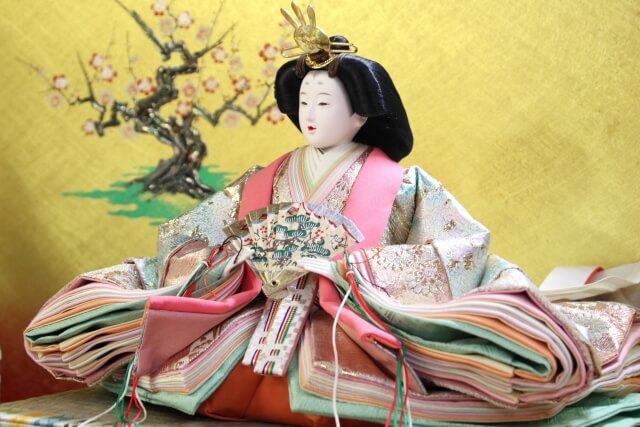
Kimonos are individually made and then worn on the doll.
Hina doll wearing a multi-layered Kimono is not only gorgeous but also brings a very realistic feeling.
Ishōgi is the most traditional and popular way of making dolls in Japan.
When discussing Hina dolls, we often refer to dolls crafted using this method.
Kimekomi method (木目込み)
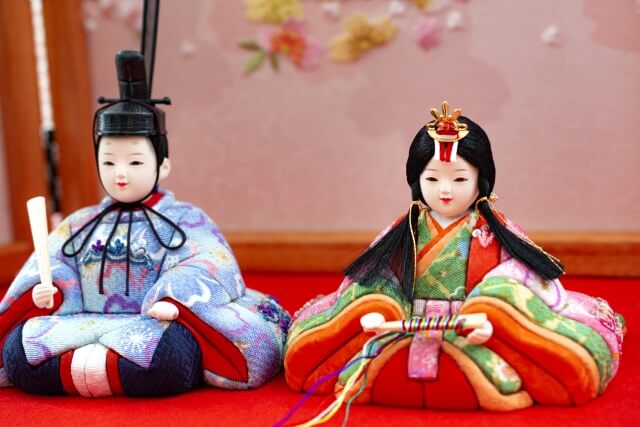
Kimonos are cut into small pieces and then inserted (or glued) into grooves on the doll’s body.
Hina dolls made using the Kimekomi method are often small in size and have more childish facial expressions.
The role of each Hina doll
“Hina doll” is actually the common name for all dolls decorated at the Hinamatsuri festival.
Each doll plays a different role, and their names and costumes are also different.
Dairibina: Emperor and Empress dolls
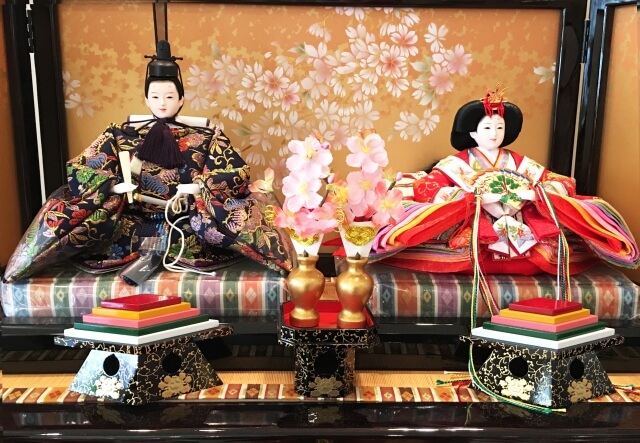
Dairibina (内裏雛), also known as Shinnō (親王), is the name of the Emperor and Empress doll pair.
The Emperor’s right hand holds a card, in his left he holds a sword.
The Empress holds a fan with both hands.
Sannin Kanjo: Palace maid doll
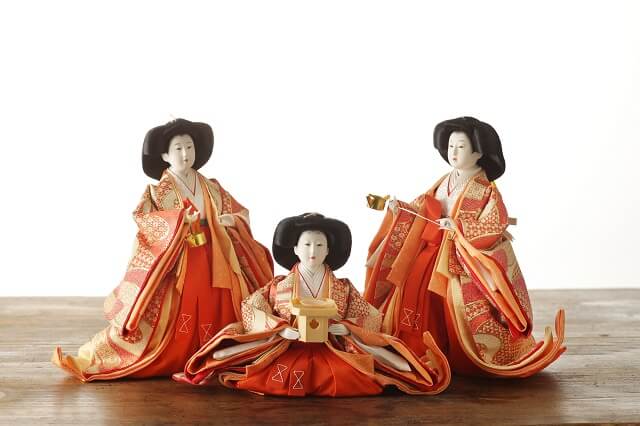
Sannin Kanjo (三人官女) is the name of the three palace maids dolls.
In their hands, three palace maids hold tools used to pour Sake.
Gonin Bayashi: Musician doll
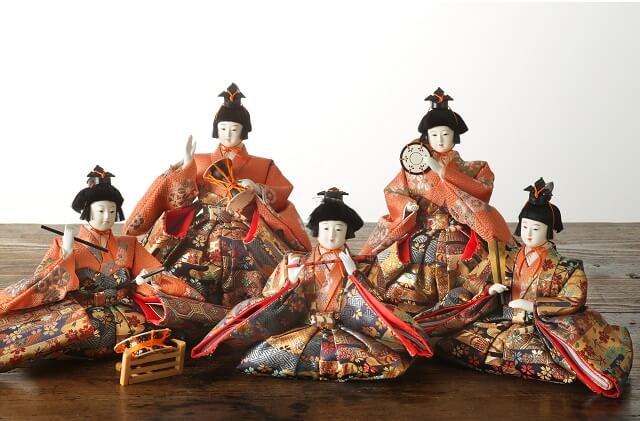
Gonin Bayashi (五人囃子) is the name of the five musician dolls.
The band consists of 3 drummers, 1 flute player and 1 singer.
Musician dolls are boys from 12 ~ 16 years old, so if you pay attention, you will see that their faces are a bit more childish than other dolls.
Zuijin: Guardian doll
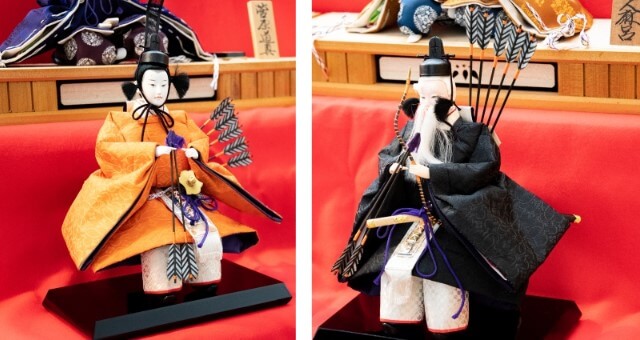
Zuijin (随身) is the name of the pair of guardian dolls.
Zuijin consists of 1 old guard and 1 young guard, whose task is to protect the Emperor and Empress when going outside.
Both guards carry the same items, their left hand holds a bow, their right hand holds an arrow, and a bag of arrows is carried on their back.
Shichō: servant doll
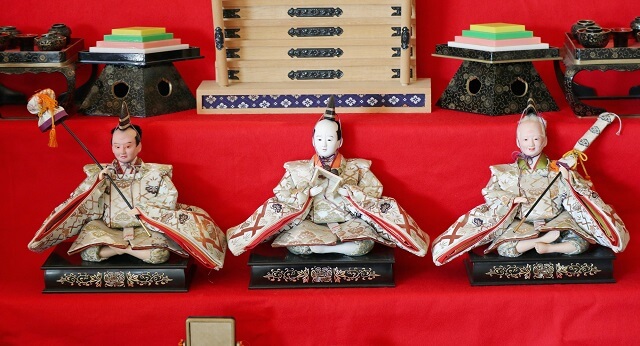
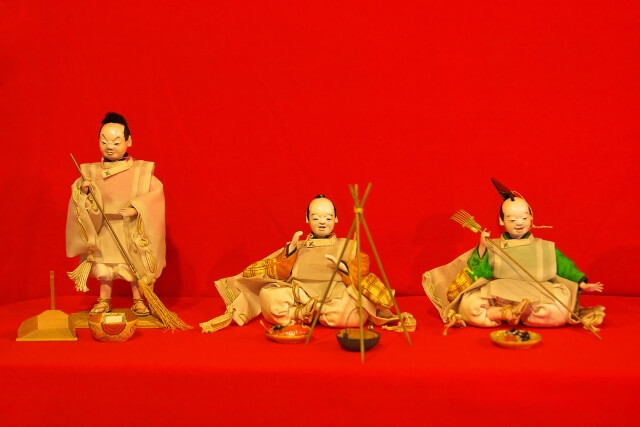
Shichō (仕丁) is the name of the three servant dolls.
The faces of the 3 dolls represent 3 main human emotions: “smiley face”, “crying face” and “angry face”.
Viewed from the front, three servants will hold a sunshade, a shoe rack and a rain umbrella respectively.
However, in Kyōto and some surrounding areas, three servants were often given a broom, a dustpan, and a rake.
Structure of a Hina doll set
The structure of a Hina doll set will include the Hina dolls and accompanying decorations.
Hina dolls
A complete Hina doll set will include 15 Hina dolls.
- Pair of Emperor and Empress dolls (Dairibina)
- Three palace maid dolls (Sannin Kanjo)
- Five musician dolls (Gonin Bayashi)
- Pair of guardian dolls (Zuijin)
- Three servant dolls (Shichō)
However, because Hina dolls are very expensive and take up display space, not many families in Japan have a full set of 15 Hina dolls.
Therefore, people divided the Hina doll set into many versions so that buyers can easily choose depending on their budget and space.
The most popular are sets of 2, sets of 5, sets of 10 and sets of 15 dolls.
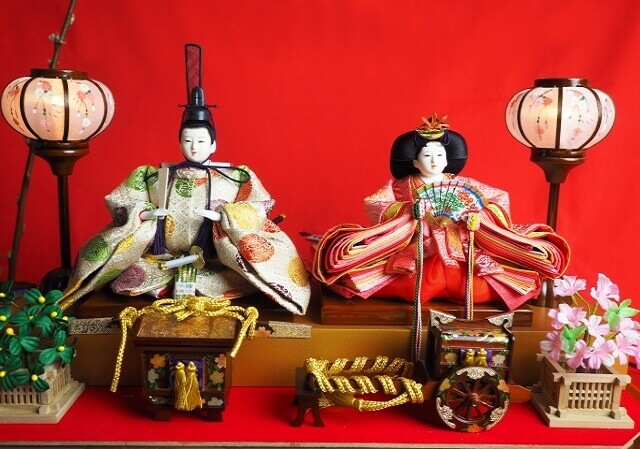
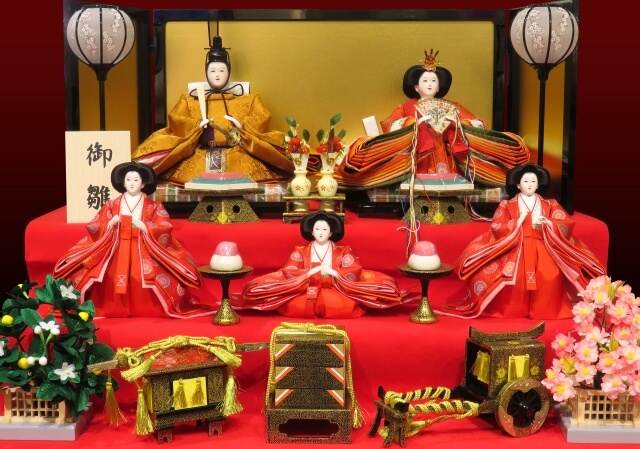
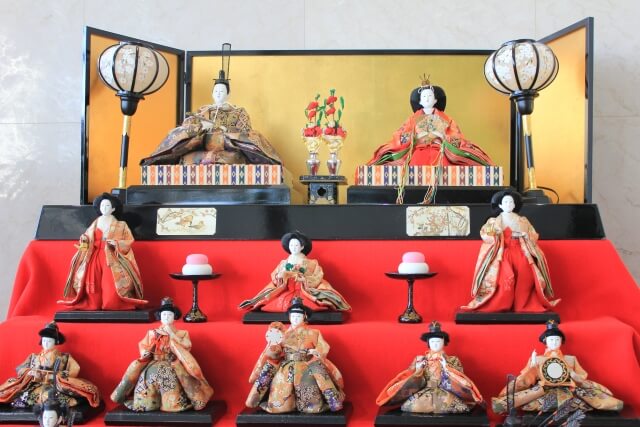
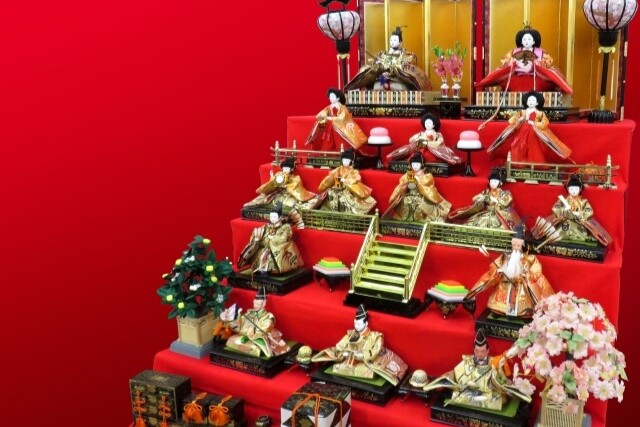
Accompanying decoration
In addition to dolls, a set of Hina dolls also comes with decorative items.
Below are some typical decorative items you can find.
Himōsen (緋毛氈)
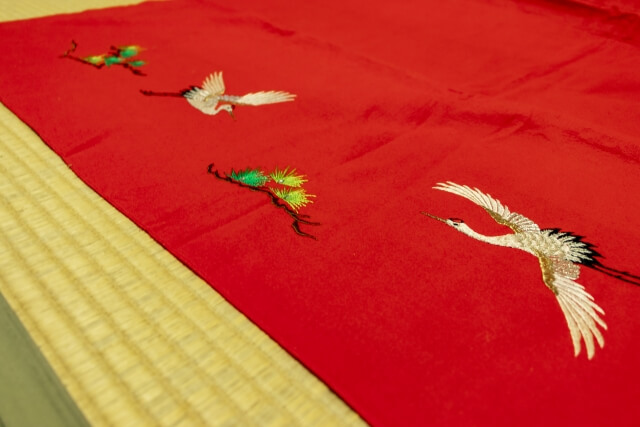
Himōsen is a red carpet spread underneath the Hina dolls.
Red is the color of life and helps ward off evil spirits.
Byōbu (屏風)
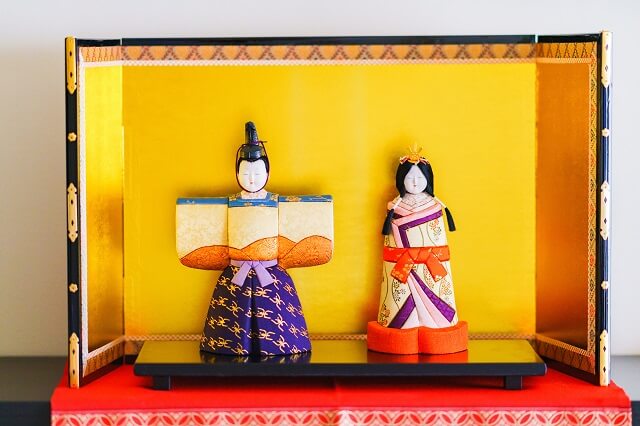
Byōbu is a screen placed behind the Emperor and Empress dolls.
Byōbu is often yellow in color, meaning “the future of both will shine brightly”.
Bonbori (ぼんぼり)
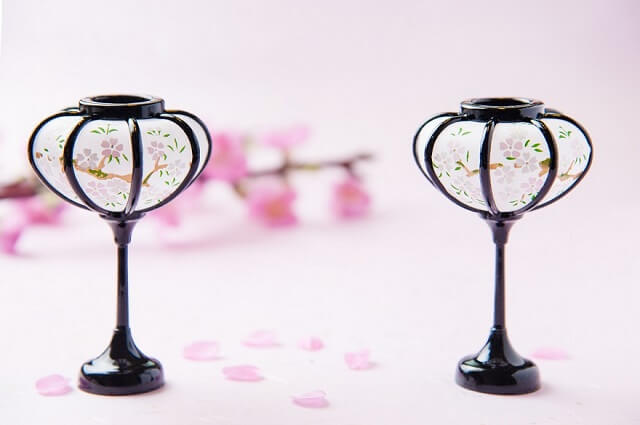
Bonbori is a candle holder with a long handle placed on either side of the Emperor and Empress.
Sakura & Tachibana (桜・橘)
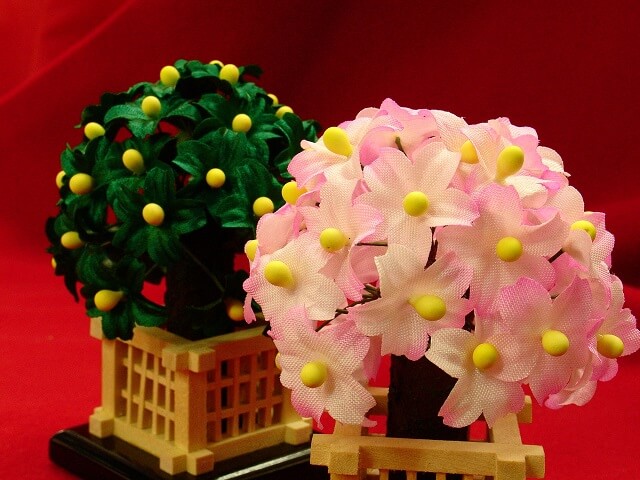
Sakura is a cherry blossom tree, with the power to ward off evil spirits and bring peace to little girls.
Tachibana is a Japanese tangerine tree. Tachibana is considered a symbol of good omen and longevity because the leaves are green all year round and the fruit lasts a long time.
Hishi-mochi (菱餅)

Hishi-mochi is a diamond-shaped sticky rice cake with 3 layers corresponding to the 3 colors pink, white and green.
Pink helps ward off evil spirits, white symbolizes purity, and green represents health and longevity.
Maru-mochi (丸餅)
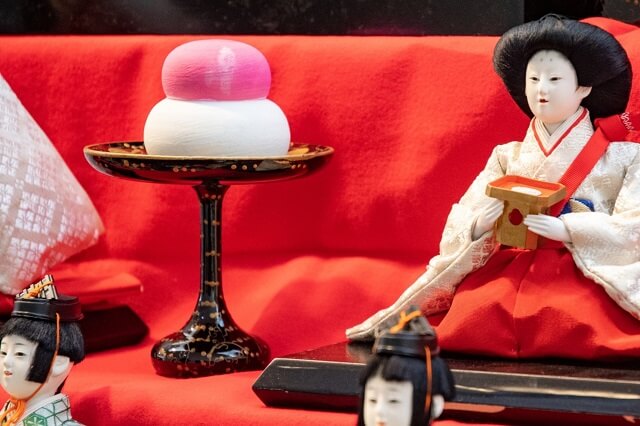
Maru-mochi is a round sticky rice cake with two layers, a large white Mochi cake underneath and a small pink Mochi cake on top.
The two Mochi cakes represent the moon and the sun.
White symbolizes purity, pink is a symbol of good omen and helps ward off evil spirits.
Yomeiri Dōgu (嫁入り道具)
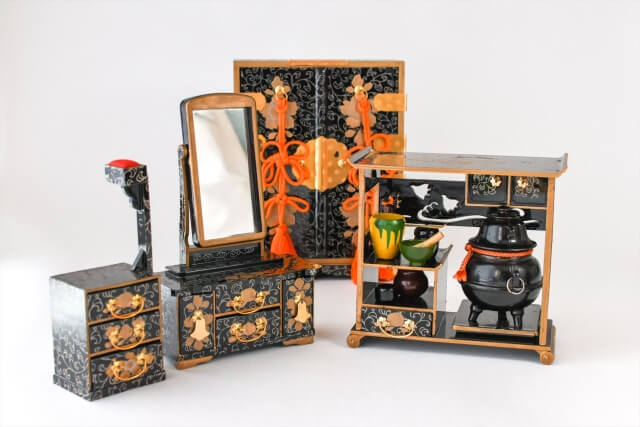
Yomeiri Dōgu is the Empress’s personal belongings, often including items such as a wardrobe, dressing table, tea ceremony utensils…
Okoshiire Dōgu (お輿入れ道具)
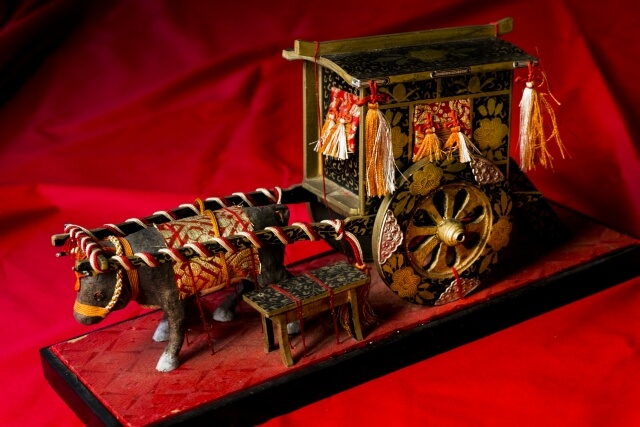
Okoshiire Dōgu were palanquins for the aristocracy in ancient times.
How much does Hina doll cost?
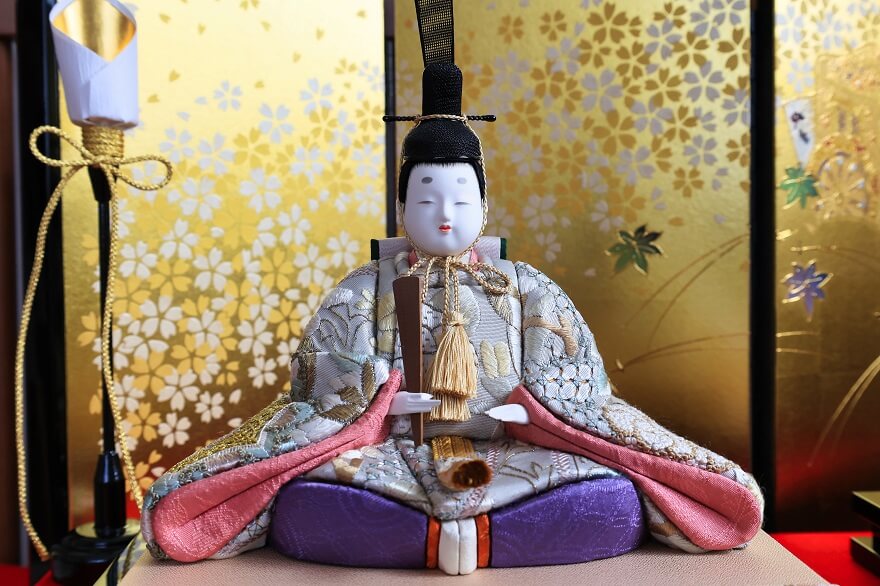
The price of Hina dolls will vary depending on size, material and sophistication.
In general, Hina dolls made using the Kimekomi method (gluing Kimono onto the doll) usually have a relatively lower price than Hina dolls made using the Ishōgi method (putting Kimono on the doll).
- Set of 2: costs around 50,000 yen ~ 450,000 yen.
- Set of 5: costs around 80,000 yen ~ 500,000 yen.
- Set of 15: priced around 200,000 yen ~ 1,000,000 yen.
In recent years, Hina dolls made of ceramic and glass have also become increasingly popular.
The appeal of Hina dolls made of ceramic and glass lies in its modern design, compact size and affordable price.
Many Japanese women choose this type of Hina doll as a seasonal decoration rather than a traditional decoration.
Conclusion
Hina dolls are the symbol of the Hinamatsuri festival, with the meaning of blessing girls growing up healthy and happy.
A complete Hina doll set includes 15 dolls and some accompanying decorations.
- 15 dolls include: 2 Emperor and Empress dolls, 3 palace maids, 5 musician dolls, 2 guardian dolls and 3 servant dolls.
- Accompanying decorations are usually: Byōbu (screen) or Yomeiri Dōgu (Empress’s personal belongings), etc.
Admiring Hina dolls will be much more interesting when you clearly understand the role of each doll and the meaning of the accompanying decorations.
Please save this article for easy reference when you have the opportunity to enjoy Hina dolls.

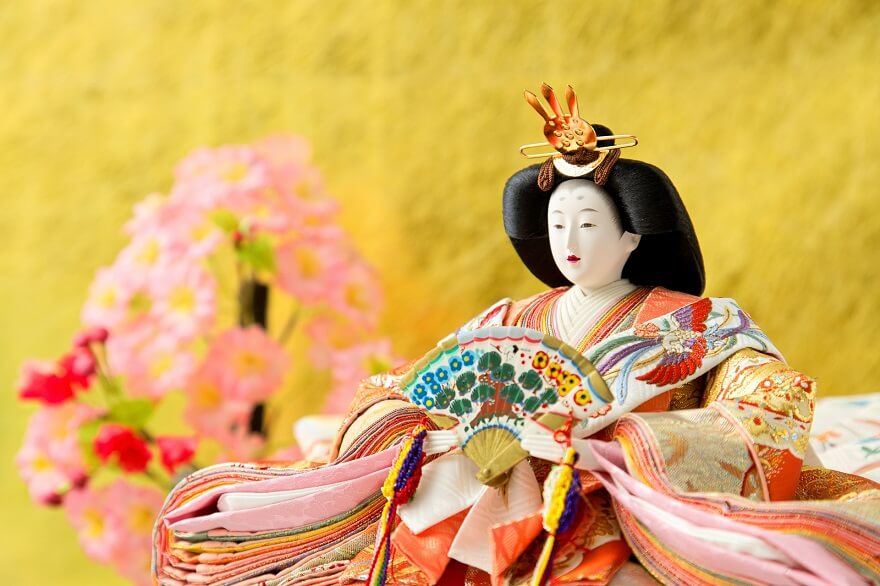


Comment